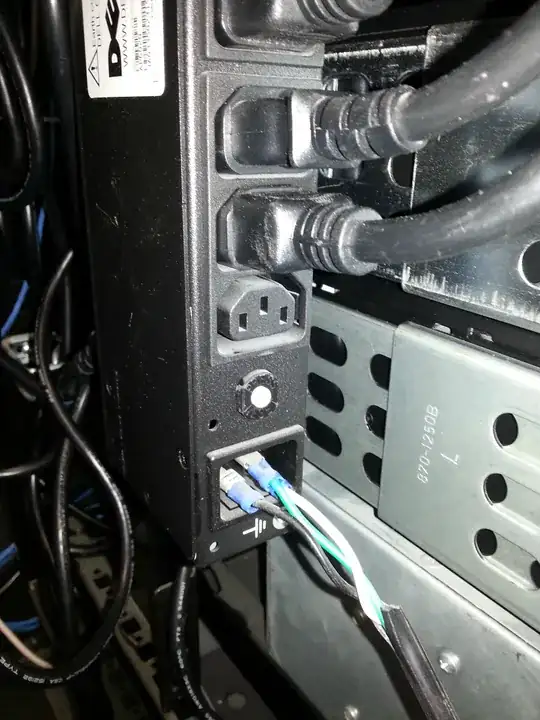I removed the side panel of our server rack so I can clean up some of the wiring. Inside I found the PDU was wired like in the picture. Instead of an incoming power cable, there's just 3 uninsulated spade connectors.
Is there any reason for wiring it like this instead of using a C19 to appropriate connector for your country cable?
Or did whoever do this just not have the right cable handy, and figure this is good enough?

Edit:
When I say uninsulated, the metal parts of the spade connectors do look completely bare. I haven't looked too closely to see if there's clear insulation or something, but it doesn't look like it, and it's live.
Edit 2
Proper cables are being dropshipped and will be installed as soon as they arrive. In the mean time nobody is going to go anywhere near it. I can easily cut power to the PDU so replacement wont be a problem.
Edit 3
The cable to the PDU has been replaced with a proper one. No electrician needed. No fires, no injuries. Yay! The faulty cable has been destroyed so nobody ever gets tempted to do something like that again. For extra damage, the cord they attached those spades to was only an 18 gauge cable, not the 14 gauge ones usually used for servers.